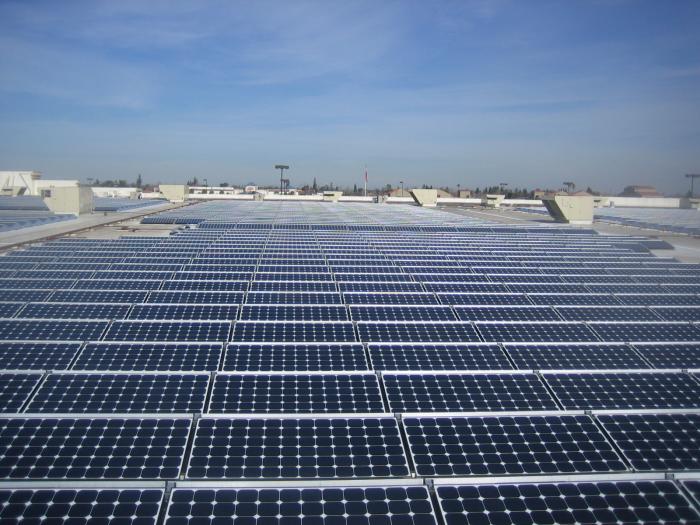
Editors Note: In 2020, SunPower announced the completion of the strategic spin-off of its manufacturing division into a separate business named Maxeon Solar Technologies, Ltd. As a result, SunPower has expanded its offerings to drive future growth. The SunPower Equinox® system now offers multiple panel options, including front- and back-contact panels, all of which are responsibly and rigorously quality tested to provide the best energy solution for your home. For more information on the differences in panel technology, see: http://ow.ly/5hPL50LzjxK.
The global solar sector is in the midst of an unprecedented period of transformation.
Within the past five years, the cost of a solar panel has come down 82 percent. Last year alone, China installed more than half as much solar as America has cumulatively. Bloomberg New Energy Finance estimates that solar power will account for 30 percent of U.S. installed energy generation by 2040.
As someone who has witnessed the ups and downs of the industry firsthand, I’m mindful that our work is just getting started.
The latest estimates provided by the U.S. Energy Information Administration (EIA) reinforce this: Out of total U.S. electricity generation in 2015, renewables account for 7 percent. Within this number, solar comprises approximately .6 percent of the total. U.S. Energy Information Administration, April 2016.
At the same time, energy demand is off the charts and will continue to be for the foreseeable future. The rate of consumption has skyrocketed over the past 50 years and will only continue on an upward trajectory. While efforts around efficiency are having an impact, EIA projects a 48 percent increase in world energy use between 2012 and 2040.: U.S. Energy Information Administration, May 2016.
A decade ago, I’d have a tough time making the argument that the trend lines might one day intersect. Costs had begun to come down, but we didn’t yet have a clear sense of grid parity, which is critical to solar becoming a mainstream energy resource. (Grid parity is the point at which an alternative energy source can generate power at a levelized cost of electricity that is less than or equal to the price of purchasing power from the electricity grid.)
The 2009 economic downturn — fresh in the minds of policymakers and industry leaders alike — led to risky investments that raised questions and distracted from the remarkable advancements happening at the time.
The difference between 2009 and today is three-fold: private sector leadership, a strong public policy foundation and technological innovations that are fundamentally changing how businesses and consumers source and consume energy.
Corporate leaders from Apple to Bed Bath & Beyond to Macy’s and Walmart are among the many U.S.-based companies that are embracing solar as a cornerstone of their operations.
COP21, the Solar Power Plan, California’s Net Energy Metering 2.0, the extension of the Solar Investment Tax Credit (ITC) and other public-private initiatives reinforce the commitment of policymakers to provide a lasting foundation.
Technological advancements, from unprecedented solar cell efficiency to system integration to energy management, keep us looking forward. In fact, combining solar with storage and energy management, once thought decades away, is now within our reach.
Solar industry has its cycles
However, despite this undeniable progress, solar will still go through cycles of prosperity and challenge.
Although a highly unique and isolated situation, the SunEdison bankruptcy contributed to a sense of market uncertainty.
While the ITC had the opposite effect (providing greater certainty), it also removed the urgency for power plant project construction in the second half of this year.
When it comes to financing, we’re seeing less competition.
We’re in another transitional period. Companies that make the right investments today and innovate with the long-term in mind will emerge as the solar energy companies of tomorrow.
The road ahead won’t be without its challenges, but we’re laser focused on making strategic decisions with the long-term in mind. It’s been embedded in our DNA since day one.
So, as I write this, I believe our strategy is one that will assure our place in this vast transformation. My 13-plus year career in the sector has taught me that the peaks and valleys are part of the journey to a truly significant opportunity. Our team is advancing SunPower’s mission every day.
Change isn’t always easy, but with our 30-year history and track record of success, we’ve shown we have the perseverance and flexibility needed for long-term success. Together with our customers, we'll continue to seize new opportunities and change the way our world is powered.

